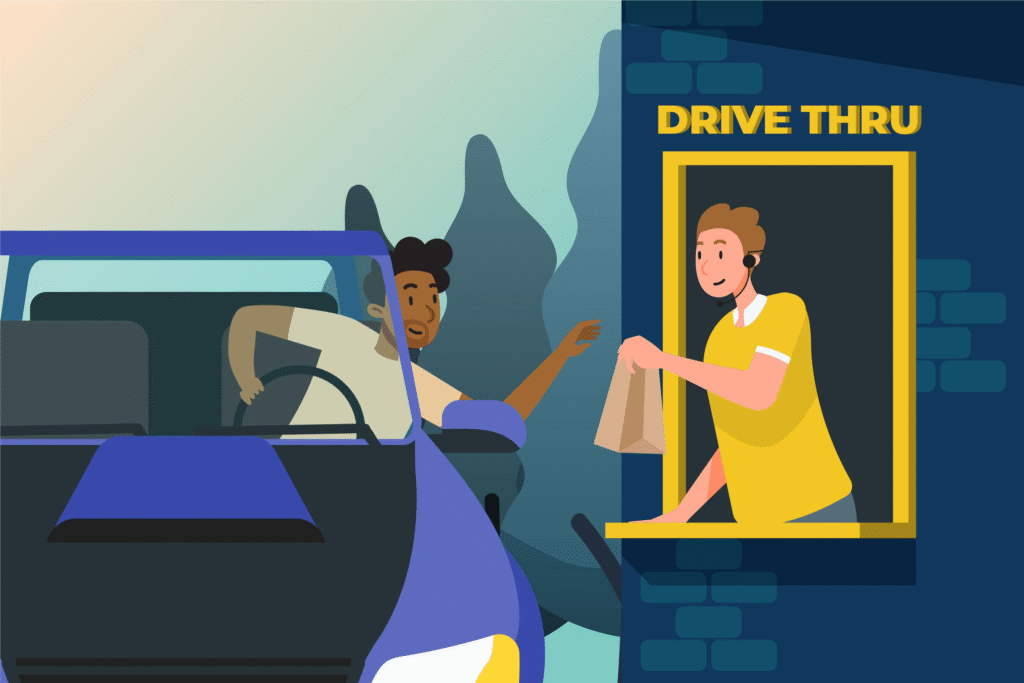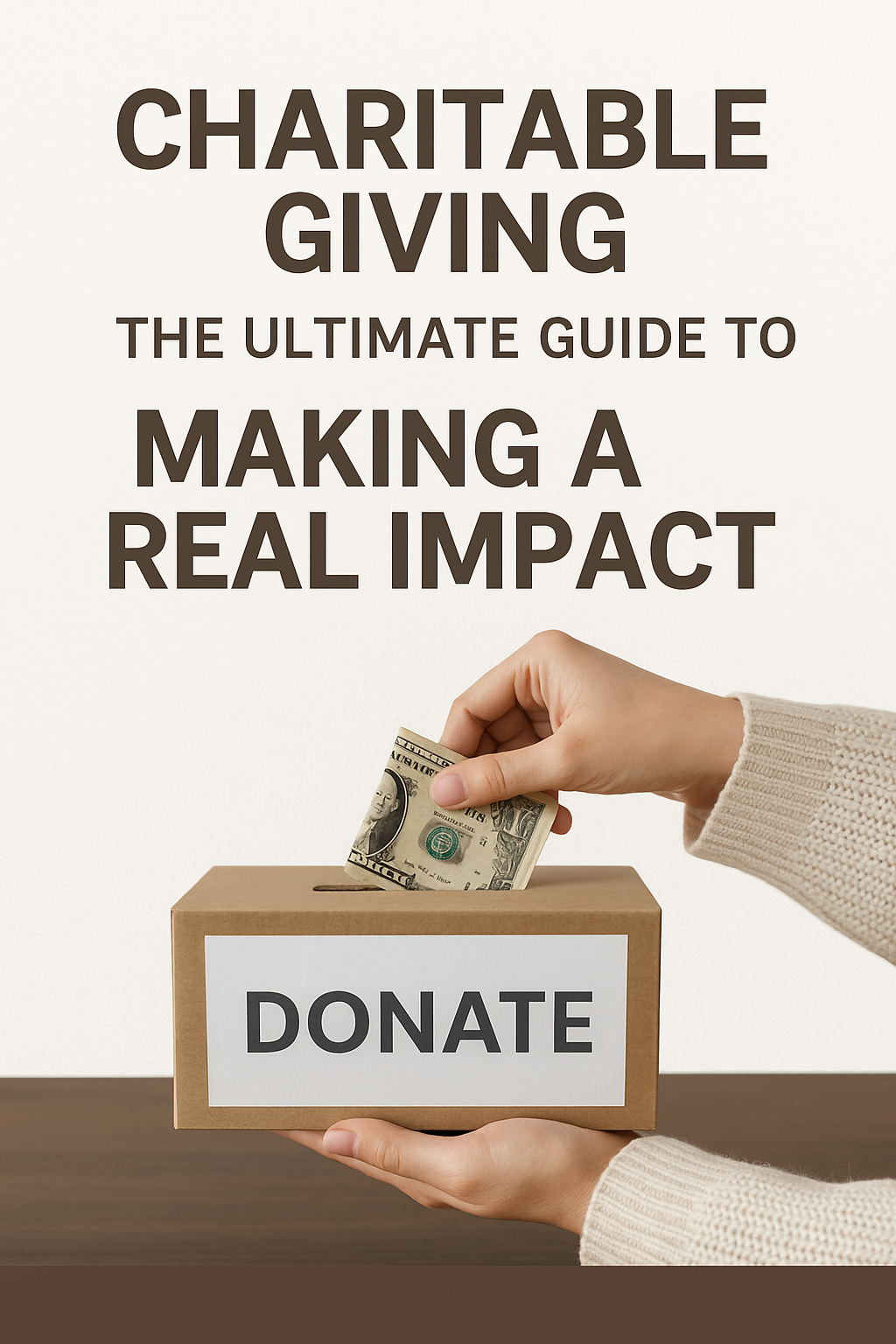The Ultimate Guide to Charitable Giving: 7 Ways to Make a Real Impact Without Getting Scammed 💝
Have you ever watched your wife secretly pay for a stranger’s meal, then drive away with that quiet smile that says she made someone’s day better? That’s my reality, and honestly, it’s one of the things I love most about her. 💕
We’re not a rich family of eight. Six kids, one military dad, and a mom who somehow stretches every dollar until it screams. But we’ve learned something powerful over our 20+ years together: helping others doesn’t require a trust fund—it requires a heart that’s willing to see beyond our own needs. 🎯
Why Secret Giving Matters More Than Public Recognition 🤫

“But when you give to the needy, do not announce it with trumpets, as the hypocrites do in the synagogues and on the streets, to be honored by men. I tell you the truth, they have received their reward in full.” Matthew 6:2
“But when you give to the needy, do not let your left hand know what your right hand is doing, so that your giving may be in secret. And your Father who sees in secret will reward you.” Matthew 6:3-4 (ESV)
These verses hit different when you’re standing behind a firefighter at McDonald’s, knowing your wife’s already decided she’s picking up his tab. No fanfare. No “You’re our hero!” speech. Just one human helping another because it’s the right thing to do. 🚒
In my two decades of marriage and military service, I’ve witnessed countless acts of kindness that went unnoticed by everyone except the giver and receiver. And you know what? Those moments carry more weight than any charity gala or tax deduction ever could. ✨
The Psychology Behind Anonymous Charitable Giving 🧠
Research from the Greater Good Science Center at UC Berkeley shows that people who engage in anonymous charitable giving report higher levels of personal satisfaction compared to those who give publicly. When we remove the social recognition aspect, we tap into something deeper—genuine compassion. 💝
My wife’s drive-thru kindness exemplifies this perfectly. She’s not looking for a thank you. She’s not posting about it on social media. She’s simply living out the principle that our actions in secret reveal our true character. 🌟
Why This Approach Builds Real Character 💪
When charitable giving becomes about recognition, it stops being about the recipient and starts being about the giver. I’ve seen this in military communities where some folks make a big show of their donations, while others quietly ensure a struggling family gets groceries. 📦
The families who helped anonymously? They’re the ones who continued giving long after the cameras stopped rolling. 🎬
The Modern Charity Scam Crisis: What Every Donor Must Know 🚨

Let me tell you something that’ll make your blood boil: Last year alone, Americans lost over $1.3 billion to charity scams according to the Federal Trade Commission. That’s money that could’ve fed hungry families, funded cancer research, or built homes for veterans. 😡
Common Red Flags I’ve Learned to Spot 🔴
After years of navigating both legitimate and fraudulent charitable organizations, here are the warning signs that make me walk away faster than recruits from mess hall duty:
⚠️ High-Pressure Tactics: Legitimate charities give you time to think. If someone’s pushing for an immediate donation, that’s a red flag bigger than the one I saluted in the Air Force.
⚠️ Vague Descriptions: “Help needy children” sounds nice, but how? Where? What percentage goes to actual programs versus administrative costs? Real charities have specific answers.
⚠️ No Verification Documents: Every legitimate charity has an EIN (Employer Identification Number) and can provide documentation of their tax-exempt status.
The Fake Homeless Network That Opened My Eyes 👀
Two years ago, I was grabbing lunch in downtown when a woman approached asking for money. Her story seemed genuine, so I gave her $20. The next week, I saw her again—in a different part of town, with a slightly different story. 🎭
That’s when I learned about organized panhandling rings from FOX News investigations. Groups that coordinate false sob stories, target high-traffic areas, and split the profits. It doesn’t mean every person asking for help is fraudulent, but it taught me to be more strategic about my charitable giving. 🎯
Investment in Research Pays Dividends in Impact 📈
Now, I spend time researching before I give. It’s like the due diligence I learned in the military—gather intelligence before making a commitment. This doesn’t make me heartless; it makes me a better steward of the resources God’s given us. 🙏
7 Essential Tools for Researching Legitimate Charities 🛠️
When you’re working with a tight budget (and trust me, with six kids, every dollar has a purpose), you need to ensure your charitable giving creates real impact. Here are the tools I’ve personally used and recommend:
1. 🌟 Charity Navigator: The Gold Standard
Charity Navigator is my go-to resource. They evaluate charities based on financial health, accountability, and transparency. Their 4-star rating system makes it easy to identify worthwhile organizations. ⭐⭐⭐⭐
What I love about Charity Navigator:
- ✅ Breaks down exactly where your money goes
- ✅ Shows CEO compensation (sometimes eye-opening)
- ✅ Tracks financial trends over multiple years
- ✅ Provides alerts about charity scandals or issues
2. 📊 GuideStar: For the Detail Oriented
If you want to dive deeper, GuideStar provides access to Form 990s—the tax returns nonprofits file with the IRS. These documents reveal everything from board member compensation to detailed program expenses. 💰
3. 🕵️ CharityWatch: The Watchdog
CharityWatch takes a different approach, focusing on how efficiently charities convert donations into charitable work. They assign letter grades and maintain a “Hall of Shame” for problematic organizations. 📝
4. 🏛️ Give.org: BBB’s Charity Resource
The Better Business Bureau’s Give.org evaluates charities based on 20 standards covering governance, results reporting, and finances. If a charity meets these standards, they receive BBB accreditation. ✨
5. 📺 Local News Investigations
Don’t underestimate your local news stations. Many have investigative teams that regularly expose charity scams in your area. I’ve avoided several questionable local organizations thanks to our evening news team’s research. 📰
6. 🏢 State Charity Registrations
Most states require charities to register before soliciting donations. Your state’s attorney general website typically has a searchable database of registered charities. If they’re not registered, don’t donate. ❌
7. 🇺🇸 IRS Exempt Organizations Select Check
The IRS maintains a searchable database of tax-exempt organizations. This helps verify that a charity is actually registered as a nonprofit and eligible to receive tax-deductible donations. ✅
Our Personal Charitable Giving Strategy (With Real Examples) 💰
Let me pull back the curtain on how our family approaches charitable giving. Remember, we’re not wealthy—we’re just intentional. 🎯
The 3-Bucket Approach 🪣🪣🪣
Bucket 1: Regular Commitments (60% of our charitable budget) 💙
This includes our monthly sponsorship of Grace through Children’s International and our church tithe. These are consistent, predictable donations that we’ve budgeted for. 📅
Bucket 2: Emergency Response (20% of our charitable budget) 🚨
When disasters strike—hurricanes, wildfires, community tragedies—we have funds set aside to respond quickly. Last year, when tornadoes hit our neighboring county, we were able to immediately send supplies and money to affected families. 🌪️
Bucket 3: Spontaneous Kindness (20% of our charitable budget) ⚡
This covers those McDonald’s meals, Starbucks gift cards for nurses during long shifts, and random acts of kindness my wife’s famous for. We keep cash specifically earmarked for these moments. 🎁
Why We Chose Children’s International 👧

Children’s International wasn’t a random choice. Here’s why they earned our monthly $39:
💯 Financial Transparency: Their 3-year average shows 85.3% of donations go directly to program funds, with only 6.2% for administrative costs and 8.5% for fundraising. That’s exceptional in the nonprofit world!
💌 Direct Connection: We sponsor Grace, a beautiful 9-year-old girl from Zambia. We receive updated photos, can send letters, and feel genuinely connected to the impact of our donation. 🇿🇲
🏫 Comprehensive Programs: They don’t just provide food—they offer healthcare, education, and community development programs that address root causes of poverty.
📈 Measurable Results: Every year, we receive detailed reports showing exactly how our money was used and what outcomes were achieved. 📊
The Military Connection: Supporting Our Own 🪖
As a veteran, I feel a special responsibility to support organizations that help current service members and veterans. We rotate between:
- 📦 Operation Gratitude: Sends care packages to deployed troops
- 🤕 Wounded Warrior Project: Despite past controversies, their financial house is now in order
- 🏛️ Local VFW: Sometimes the best impact is right in your backyard
How to Help Local Community Members Without Getting Burned 🏘️
Local charitable giving requires a different strategy than supporting large organizations. Here’s what I’ve learned from years of community involvement:
Build Relationships, Not Transactions 🤝
Instead of just handing cash to individuals, we’ve found success in building ongoing relationships. We’ve helped several families over the years by:
- 💡 Paying specific bills (utilities, rent) directly to providers
- 🍖 Providing groceries through local food banks
- 👔 Offering job referrals and networking opportunities
- 📚 Teaching financial literacy skills
Partner with Trusted Local Organizations 🏢
Rather than going solo, we work through established local charities that know the community. Our favorites include:
🥫 Local Food Pantries: They have systems to prevent abuse and know which families genuinely need help.
⛪ Church Social Services: Even if you’re not religious, many churches run excellent community support programs with proper oversight.
🏫 School Counselors: They often know which kids need coats, school supplies, or free lunches on weekends.
The “Verification but Not Judgment” Approach ⚖️
I’m not trying to be anyone’s judge, but I am trying to be a wise steward. When someone approaches me for help, I:
- 👂 Listen without immediate judgment
- 🎁 Offer specific help rather than cash (grocery gift cards, gas cards, etc.)
- 🤝 Connect them with local resources if needed
- 🚧 Set clear boundaries about what I can and can’t do
This approach protects both parties and ensures help reaches those who really need it. ✨
Teaching Kids About Charitable Giving on a Tight Budget 👶
With six kids, teaching about charitable giving can’t be all theoretical. Here’s how we make it practical:
Age-Appropriate Charitable Activities 🎯

Ages 3-6: 👨👩👧👦
- 🧸 Donate old toys to local shelters
- 🥫 Participate in church food drives
- 🍲 Help prepare meals for sick neighbors
Ages 7-12: 🧑🎓
- 📊 Choose family charitable giving recipients together
- 🔍 Compare charity effectiveness using simple metrics
- 📦 Organize neighborhood supply drives
Ages 13-18: 👨🎓
- 📋 Research and present charity options to the family
- 🤚 Volunteer at local organizations
- 💰 Start their own small fundraising projects
The “Everyone Gives Something” Rule 👪
Every family member contributes to our charitable giving, even if it’s just a dollar from allowance or choosing which toys to donate. This creates ownership and understanding that charitable giving isn’t just a parent responsibility. 🎯
Making Charity Selection a Teaching Moment 🎓
When we research new charities together, we turn it into a learning experience:
- 📊 Read financial statements together
- 🤔 Discuss what makes an organization effective
- 💭 Talk about different approaches to solving problems
- 🌍 Compare local versus international impact
Creating Your Family’s Giving Plan That Actually Works 📋
After years of trial and error, here’s the framework that actually works for busy families:
Step 1: Determine Your Charitable Giving Budget 💵
Be realistic. Start with 1-3% of your income if you’re new to systematic charitable giving. As a military family, we started with just $50 per month total. Now, with increased income and better budgeting, we’ve grown that significantly. 📈
Step 2: Choose Your Primary Cause 🎯
Pick one area where you’ll focus most of your charitable energy. For us, it’s child welfare and poverty alleviation. For you, it might be:
- 🌱 Environmental conservation
- 🔬 Medical research
- 🏘️ Local community development
- 🐕 Animal welfare
- 📚 Education
Step 3: Select 2-3 High-Impact Organizations 🏆
Don’t spread your money too thin. Better to make a real impact with a few organizations than send $10 to dozens of charities.
Step 4: Build in Spontaneous Giving ⚡
Don’t earmark every charitable dollar. Leave room for those moments when you see immediate need or want to surprise someone with kindness.
Step 5: Review and Adjust Annually 📅
Like any good financial plan, review your charitable giving strategy annually. What organizations performed well? What areas of need have emerged in your community?
The Unexpected Benefits of Charitable Giving 🎁
Beyond the obvious benefit of helping others, our family has discovered some unexpected advantages to consistent charitable giving:
Strengthened Family Bonds 💪
Working together to choose charities and volunteer has brought our family closer. Our kids now actively look for ways to help others, and family discussions about charitable giving often lead to deeper conversations about values and priorities. 💕
Financial Discipline Improvements 💰
When you designate money for charitable giving, you’re forced to be more intentional about other spending. We’ve actually become better budgeters since we started systematic charitable giving! 📊
Enhanced Community Connections 🤝
Supporting local charities has connected us with other like-minded families. Our kids have made friends through volunteer activities, and we’ve built relationships that extend beyond charitable work. 👫
Modeling Values in Action ✨
Our kids see that our faith and values aren’t just Sunday talk—they influence how we handle our money and time throughout the week. 🙏
Common Mistakes to Avoid in Charitable Giving ❌
Learn from my mistakes so you don’t have to make them yourself:
Giving Emotionally Without Research 💔
Early in our marriage, we gave substantial amounts to several charities without proper research. Later, we discovered one was spending 80% of donations on fundraising and administration. Now, emotion might drive the initial desire to give, but research guides the actual decision. 🔍
Ignoring Tax Benefits 💸
Proper documentation and strategic timing of charitable giving can result in significant tax benefits. Consult with a tax professional to maximize your impact while benefiting from available deductions. 📊
Not Setting Boundaries 🚧
We learned the hard way that you can’t help everyone. Set clear boundaries about what you can and cannot do, both financially and emotionally.
Forgetting About Local Needs 🏠
It’s easy to get caught up in international causes while ignoring needs in your own backyard. Balance global giving with local impact. 🌍➡️🏘️
The Ripple Effect: How Your Charitable Giving Inspires Others 🌊
One of the most beautiful aspects of charitable giving is how it multiplies. When our kids see us helping others, they start looking for ways to help too. When neighbors see our family volunteering, they ask how they can get involved. 🌟
Leading by Example, Not Words 👑
My wife’s secret meal purchases have inspired several of our friends to start similar practices. They didn’t know she was doing it until they happened to be behind her one day. Now it’s become an informal competition among military spouses—who can surprise the most service members with random kindness? 🏆
Creating a Culture of Generosity 💝
In our neighborhood, one family’s charitable giving habits have inspired an entire street. We now have an informal support network where neighbors help each other during tough times, share resources, and collectively support local charities. 🏘️
Practical Tips for Maximizing Your Charitable Impact 🚀
Here are actionable strategies I’ve developed over years of charitable giving:
Timing Your Donations ⏰
- ⭐ Give early in the year to maximize tax benefits
- 📅 Consider quarterly giving for better budget management
- 🚨 Time disaster relief donations carefully—immediate needs versus long-term recovery efforts
Matching Programs 🤝
- 💼 Check if your employer offers charitable matching
- 🏛️ Look for community foundation matching programs
- 🎄 Time donations to take advantage of holiday matching campaigns
Non-Monetary Giving 💪
- 📈 Donate appreciated stock instead of cash
- ⏰ Give time and skills, not just money
- 📦 Organize drives for specific needs (hygiene products, school supplies, etc.)
Building Giving Into Regular Routines 🔄
- 🔁 Set up automatic monthly donations
- 💰 Use charity apps that round up purchases
- 🏦 Designate specific accounts for charitable giving
When to Say No: Protecting Your Family While Helping Others ✋
Learning to say no is crucial for sustainable charitable giving. Here’s when I’ve learned to decline:
Red Flags That Suggest Scams 🚩
- ⚡ High-pressure tactics or immediate deadlines
- 🪙 Requests for payment via wire transfer, gift cards, or cryptocurrency
- 📋 Inability to provide documentation of tax-exempt status
- ❓ Vague descriptions of how money will be used
Legitimate Reasons to Decline ✅
- 🎯 The charity doesn’t align with your values or priorities
- 📊 Your research reveals poor financial management
- 💰 You’ve reached your giving budget for the period
- 🔄 You’re being asked to support causes you’ve already committed to elsewhere
Preparing Your Kids for Adult Charitable Giving 👨👩👧👦
As a father of six, I want each of my children to develop healthy attitudes toward charitable giving. Here’s how we’re setting them up for success:
Age-Progressive Responsibility 📈
Each child takes on more responsibility for charitable giving as they age:
- 👶 Elementary: Choosing family toy donations
- 🧑🎓 Middle School: Researching potential family charity choices
- 👨🎓 High School: Managing their own small charitable budget
- 🎓 College: Independently selecting and supporting causes
Teaching Financial Wisdom 🧠
We use charitable giving to teach broader financial lessons:
- 🔍 Research before committing
- 📈 Start small and grow gradually
- ⚖️ Balance emotional responses with logical analysis
- 💭 Understand the difference between needs and wants
The Long-Term Vision: Building a Legacy of Giving 🏛️
Charitable giving isn’t just about solving immediate problems—it’s about building a legacy that outlasts us. Here’s how we’re thinking long-term:
Teaching Values, Not Just Writing Checks ✨
We want our kids to understand that charitable giving reflects deeper values of compassion, stewardship, and community responsibility. Money is just the tool; the real gift is the heart behind it. 💝
Building Generational Patterns 👪
Research from the Center on Philanthropy at Indiana University shows that children who grow up in families with strong charitable giving patterns are 40% more likely to give charitably as adults. We’re not just meeting today’s needs—we’re shaping tomorrow’s givers. 🌟
Creating Systemic Change 🌍
While individual acts of kindness matter enormously, we also discuss with our kids how charitable giving can address root causes of problems, not just symptoms. 🌱
Final Thoughts: The Secret Reward of Quiet Generosity 🤫

As I watch my wife drive away from that fast-food window, having secretly paid for the firefighter’s meal, I see something beautiful. She doesn’t need recognition. She doesn’t need a thank you. She just needs to know that she made someone’s day a little brighter. ✨
That’s the heart of true charitable giving—not the tax deductions, not the warm fuzzy feelings, not even the visible impact. It’s the quiet knowledge that you used what you have to help others, expecting nothing in return. 💝
In a world where social media encourages us to broadcast every good deed, there’s something revolutionary about secret kindness. It strips away ego and leaves pure intention. 🌟
Whether you’re giving $5 or $5,000, whether you’re donating time or money, whether you’re helping locally or globally—remember that charitable giving is ultimately about love in action. It’s about seeing beyond ourselves and recognizing that we’re all connected. 🤝
“Give, and it will be given to you. A good measure, pressed down, shaken together and running over, will be poured into your lap. For with the measure you use, it will be measured to you.” Luke 6:38 💝
As you develop your own charitable giving strategy, remember that perfection isn’t the goal—progress is. Start where you are, with what you have, and trust that even small acts of kindness create ripples that extend far beyond what you can see. 🌊
After all, the most powerful rewards of charitable giving aren’t measured in dollars and cents—they’re measured in lives changed, communities strengthened, and hearts transformed. ❤️
What act of secret kindness will you commit to this week? Share your thoughts in the comments below, and let’s inspire each other to make a difference, one quiet act at a time. 💬
Ready to start your charitable giving journey? 🚀

Pin this guide to revisit later or share with someone who wants to give with purpose.





